At this technological revolution level stands the gummy industry. Advances...
Read MoreTexas Roadhouse Rolls: Tips and Tricks for Achieving the Perfect Texture


There are few things comparable to biting into a warm, fluffy roll that simply melts away, especially when complemented with fancifully cinnamon-infused butter! The fame of Texas Roadhouse rolls came from their fluffy quality and sheer deliciousness of the sweet and spiced butter spread, making them a staple among family occasions, significant gatherings, and even holiday feasts. But what happens if you are tempted to try your hand at making this classic in your kitchen? This article outlines all the tips and tricks to achieve the perfect texture for these famous rolls, as well as a secret to mastering the cinnamon butter. Whether you are familiar with baking or just trying to make an impression at your next affair, we have information on how to recreate Texas Roadhouse magic in the comforts of your very own home. It’s time to revolutionize your baking!
Introduction to Texas Roadhouse Rolls
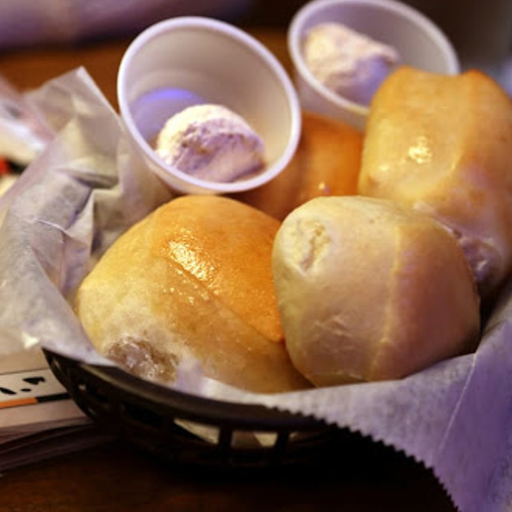
What Distinguishes Texas Roadhouse Rolls from Others?
Texas Roadhouse rolls enjoy their reputation for having that soft, pillowy texture, along with a sweet buttery flavor, which instantly sets them apart. Their trademark lightness is attributed to a dough slightly enriched with butter and sugar, which confers just the right amount of sweetness and moisture even after baking. Lesser bread rolls taste mostly ordinary, but these honeyed delights put the crown on the savory dishes for which Texas Roadhouse is famous. The fluffy interior that makes the rolls coveted results from kneading and resting for a sufficient amount of time, which allows the yeast to rise to its fullest potential. Home bakers can easily duplicate it if only they remember to be just a little patient and deliberate with their movements.
One of the great attractions of the rolls is their pairing with that very much-beloved cinnamon honey butter. Warm rolls, bursting with buttery sweetness, elevate the dining experience to a new level of luxury, adding an extra dimension to already excellent bread. It is from this tandem that Texas Roadhouse derives its allure, which is a significant draw for customers. The butter enriches the rolls with the taste of spices without overpowering the sweet burst; every bite seems like a splurge. You can also treat yourself at home when you nail this, as well as at a restaurant, and serve delightfully rich food to stunning friends and family.
Overview of the Famous Cinnamon Butter
The cinnamon butter that accompanies Texas Roadhouse rolls has somehow gained almost legendary status due to its creamy texture and just-right spiced flavor. This sweet, buttery topping is prepared by combining softened butter, powdered sugar, honey, and cinnamon in a manner that complements warm, slightly sweet rolls. The balance of sweetness and spice makes the cinnamon butter versatile, making any freshly baked bread taste a thousand times better, while also surprising with an unexpected taste on pancakes, waffles, or even roasted vegetables.
The popularity of cinnamon butter stems from the connection it creates with the dining experience itself. The spread, exuding warmth from its homemade feel to a nostalgic nod to indulgent comfort food, is firmly intertwined with the brand identity of Texas Roadhouse, leaving an indelible mark on its customers. Countless diners attempt to make this spread at home, prompting an explosion of copycat recipes and variations online. This type of perpetuity is a testament to high-quality yet straightforward ingredients, carefully combined with a singular focus on taste and experience. Whether at a restaurant or on the countertop at home, cinnamon butter has become more than just a comfort food staple; it’s a hallmark of happy creations.
Why the Larger Popularity of Copycat Recipes?
The increasing popularity of copycat recipes is mainly due to their ability to transform dishes typically made in a restaurant setting into ones that can be easily cooked and enjoyed at home. Rising costs of dining out and a rapidly increasing emphasis on quick food have led the average food enthusiast to resort to these recipes for their ability to offer gourmet cuisine without compromising flavor or quality. Copycat recipes put every person in the driver’s seat when it comes to cooking; save money while indulging in the flavors they love. These recipes allow home chefs time for modification, enabling them to adapt any ingredients to specific tastes, nutritional requirements, or personal preferences.
Furthermore, the promise of fueling the rise of such recipes lies in the unique pairing of nostalgia and emotional attachment, which together bring delight. Many elated dishes at anchor restaurants bring fond memories. It could be a celebration at a favorite steakhouse or a family tradition of going out. Bringing those meals to life at home is also a way of reliving and putting a personal spin on that latter memory. Copycat recipes are the ultimate goal, supported by numerous recipes shared on social media channels, blog sites, and YouTube, allowing everyone to share ideas and enhance their kitchen endeavors. The combined magic of such recipes — creativity, affordability, and accessibility —is what has set the stage for copycat recipes in modern culinary culture.
How to Make Texas Roadhouse Rolls at Home
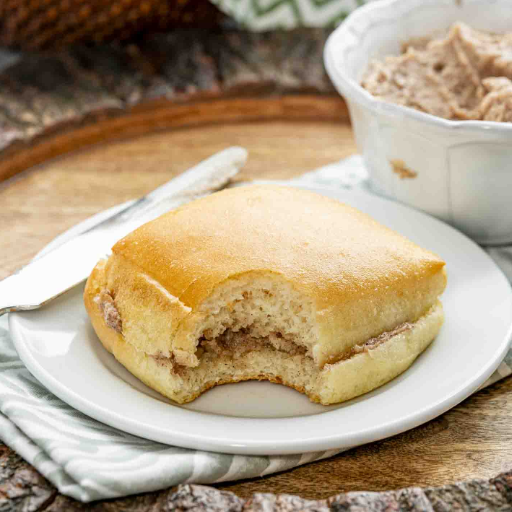
Basic Ingredients for Soft Rolls
Making Texas Roadhouse rolls will require simple ingredients measured with precision, allowing the dough to rise into a fluffy, soft texture with a hint of sweetness. These ingredients are:
4 cups all-purpose flour: It will be the main ingredient for the rolls and will determine how soft they will turn out.
2 1/4 teaspoons active dry yeast: Yeast is the active leavening agent, so without it, the rolls will be flat and heavy instead of light and airy.
1 1/4 cups warm milk (110°F): Warm milk triggers activation of yeast and resultant development of a rich texture with tenderness.
1/4 cup granulated sugar: This slight touch of sweetness enhances the overall flavor.
3 tablespoons softened butter: The butter increases the flavor and moisture of the rolls.
1 large egg: This makes the dough rich while binding the ingredients together.
1 teaspoon salt: Balances outward sweetness and improves flavor.
When used in the proper proportion, these ingredients yield a dough that is tender enough to bring to life the sweet, airy appeal of Texas Roadhouse rolls. Maintaining the quality and freshness of ingredients will be paramount in achieving a commercial bakery result at home.
Texas Roadhouse Roll Stepwise Method
Preparing Yeast Mixture: Activate the yeast by warming 1 cup of milk to about 110°F (43°C), warm to the touch but not boiling. Stir in 2 1/4 teaspoons of active dry yeast with 1 tablespoon of granulated sugar. Let stand for about 5-10 minutes, or until the mixture is frothy. This will confirm if the yeast is active and will allow the dough to rise correctly.
Mixing Wet Ingredients: In a large mixing bowl, whisk together the frothy yeast mixture, 1/4 cup of melted unsalted butter (cooled slightly before mixing), 1 egg, and 1/4 cup of granulated sugar until smooth and well combined. This will be the rich, slightly sweet base of the dough.
Incorporating Dry Ingredients: Add 2 cups of all-purpose flour and salt to the wet ingredients gradually. Mix using a wooden spoon or a dough hook attachment on a stand mixer until the dough begins to form. Slowly add another 1 1/2 cups of flour, in small increments, until the dough feels soft and only slightly sticky.
Knead: Transfer the dough onto a floured surface and knead it for 8-10 minutes, until it is smooth and elastic. For using a stand mixer, knead for the same amount of time on medium speed using the dough hook.
First Proofing: Place the dough in an oiled bowl, cover it with either a kitchen towel or plastic wrap, and let it rise in a warm, draft-free area for 1-2 hours. In its double size, it will demonstrate proofing at its best.
Shape the Rolls: After the dough has properly risen, gently punch it down to release the gases. On a lightly floured surface, roll out to a 1/2-inch thickness. Using a sharp knife or dough cutter, cut into even rectangles or squares for the traditional Texas Roadhouse shape. Place the shaped rolls on a greased or parchment-lined baking sheet.
Second Proofing: Cover the dough with a towel and allow it to rise for an additional 30 to 45 minutes. This will cause the rolls to be lighter and more fluffy.
Bake the Rolls: Preheat the oven to 350°F (175°C). Bake for 12-15 minutes, or until the top is golden brown. Set the timer halfway through baking, so it reminds you to rotate the roll for even baking.
Brush with Butter: Once removed from the oven, brush generously with melted butter to reproduce that trademark shine and flavor. Allow the rolls to slightly cool before serving.
These soft, buttery rolls are best enjoyed fresh, but can be stored in an airtight container for up to two days or refrigerated for more extended storage. Serve with any of your signature dishes, and remember to slather on some cinnamon honey butter for a true Texas Roadhouse experience!
Instant Yeast Vs. Traditional Yeast
The difference between instant and traditional yeast has a significant impact on the procedure and outcome when baking homemade rolls. Instant yeast, also known as fast-rising yeast or bread machine yeast, is finely ground and works quickly. It has a quicker acting time than regular yeast and does not need to be activated or proofed in water, and it cannot be considered time-saving in baking. This is used for slower-rising applications where a fast rise time is desired without sacrificing texture or flavor.
Traditionally, known as active dry yeast, it must be floated in warm water with vagabond sugar to activate the yeast. This proofing method proves that the yeast is living and active. Although this procedure takes only a little time, many bakers argue that it enhances the flavor of the bread due to the longer fermentation time.
Studies have shown that instant yeast falls short of the fermentation activity exhibited by traditional yeast in long or cold-proofing situations. It’s well-suited in this way to deliver rich, complex flavors during long fermentations. If it’s about high-volume baking or meeting deadlines, the better choice would be instant yeast.
Both yeasts have their pros and cons, and beyond some of the differences mentioned above, the final decision ultimately falls to the baker. When speedy results and efficiency are a priority, instant yeast is the best choice. For those who take pride in the baking artistry and cherish a grander flavor, they would appreciate and cherish the extra time given to their creation using traditional yeast.
Tips for Achieving the Perfect Texture
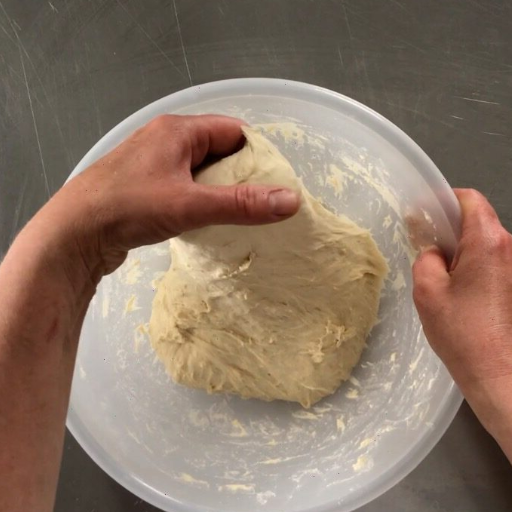
Importance of Good Dough Rise
Rising the dough all the way is one of the primary factors in food preparation that affects the texture, flavor, and even the structure of the final product. Proper fermentation allows yeast to produce carbon dioxide, resulting in the bread’s light and airy texture. The rise provides for the formation of the gluten network in the dough, making it elastic enough to maintain its shape during baking.
Several variables affect the quality of dough rise, with the most important being temperature, humidity, and resting time. For example, temperatures between 75°F and 80°F (24 °C to 27°C) will produce favorable conditions for yeast activity; extreme temperatures will either slow it down or completely kill it. Humidity also aids: a slightly moist atmosphere prevents the surface from drying out, thus allowing the dough to rise evenly.
Time is also crucial – a rise that is too short results in a dense, underproofed bread; overproofing, however, causes its structure to collapse and ends up being deflated and too sour. To yield consistent good results, most professional bakers use proven tools and methods to determine when the dough is ready, such as the so-called “poke test,” which measures how quickly a dough springs back when gently pressed.
Understanding these fine points and mastering the rise process gives bakers the confidence to experiment with new recipes and techniques while consistently producing a soft and flavorful loaf of bread. It is, in fact, from a correctly fermented dough that high-grade bread originates, so a correct rise procedure is a must if one is to succeed in their baking ventures.
The Best Techniques for Kneading Dough
Properly kneading dough is a primary step in bread making that develops the gluten, which gives the bread its structure and elasticity. Effective kneading techniques vary, but key factors to remember include consistency and attention to detail regarding texture. The hand-kneading method is by far the most common approach; bakers fold, push, and turn the dough endlessly by hand. Working firm pressure into the dough with a rhythmic folding, making, and twisting motion ensures even gluten formation.
Modern bakers find stand mixers with a dough hook a convenient method of kneading, as it eliminates much of the manual effort while guaranteeing a bakery-quality finish. Manufacturers recommend kneading the dough in a stand mixer for 8 to 10 minutes at low to medium speed to prevent overheating, which can hinder the yeast’s ability to work. Overusing the mixer, however, remains a risk, so be mindful of this, as poor kneading can result in dense bread with an overly tight crumb.
A crucial step is to recognize when the dough has been kneaded sufficiently. If it is well kneaded, it will be smooth and elastic, and will pass the “windowpane test,” in which a dough stretched so thin can almost be translucent without tearing easily, indicating well-developed gluten. Whether kneading by hand or by machine, applying the right amount of pressure, coupled with resting, will reward bakers with light, airy, and fulfilling bread.
Secrets to Soft and Fluffy Rolls
The secret to making soft and fluffy rolls lies in the ingredients, the technique, and having patience. Begin with enriching ingredients that feature milk, butter, or eggs, as these factors tenderize the crumb while keeping it moist. Hydration is key: the wetter the batter, the softer it will be as the water is converted to steam during baking.
Temperature is also a key component. Warm liquid is the best to activate yeast, allowing it to perform a good rise. Afterward, let the dough to proof in a warm area without any drafts, allowing it to double in size. However, do not allow excessive proofing, as this can weaken the dough structure, resulting in dense rolls.
As far as the technique is concerned, gentle kneading is necessary to help develop the gluten protein without overworking it. After shaping, the rolls are ready for a final proof before baking, which allows for the formation of a delicate structure. Brushing the rolls with melted butter right after baking seals in the warmth and moisture, leaving a luscious, buttery glow. Use all of these techniques to yield soft and fluffy rolls every time that will tantalize your taste buds.
Serving Suggestions with Cinnamon Butter
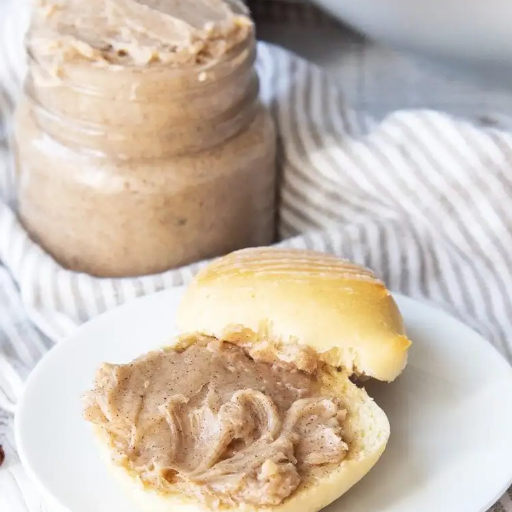
Honey Cinnamon Butter Recipe
This luscious treat complements rolls so beautifully. It offers a sweet, creamy richness that comes with a warm cinnamon spice note and pairs well with rolls, bread, pancakes, or waffles. To make this buttery delight, you’ll need to gather a few simple ingredients that are almost always found in the kitchen. Grab one-half cup of unsalted butter at room temperature, one-quarter cup of honey, one teaspoon of cinnamon powder, and just a pinch of salt to counter the sweetness.
Next comes the butter. Place the butter in a mixing bowl and beat it with a hand mixer, electric mixer, or whisk until it becomes fluffy. Then slowly drizzle in the honey, blending steadily until the mixture has become smooth. Next, sprinkle in your cinnamon and a pinch of salt, and beat for an extra minute until the butter is well mixed, creamy, and light brown, with speckles of cinnamon throughout.
The butter can now be stored in an airtight container or wrapped up in parchment paper into a log shape for easy serving. It can be stored in the fridge for about a week or defrosted for a more extended period. Take it out and let it soften a little before serving for easy spreading. Everything that contributes to this treat-worthy glory was made with honey, cinnamon, and butter.
Good Pairings for Rolls with Other Foods
Rolls vary in their accompaniments and can complement different kinds of meals; that’s why they’re almost always featured at dining tables. Soft buttery rolls match comfort soups of any kind, like creamy tomato bisque or potato chowder, to complete the match and a satisfying pair. For more hardy meals, they complement roast chicken, meltingly tender beef brisket, or glazed ham, as the rolls soak up the rich sauces and gravy.
On light fare days, rolls accompany fresh salads, such as zesty Caesar salad or a lively strain with spinach. This must-serve roll party will release much-needed drying contrast. At a regular breakfast or brunch, a roll can accompany scrambled eggs, savory sausage links, or be spread with fruit preserves for a sweet accompaniment. Rolls will bring all the food together, from daily dinners to celebrations, with soft energy.
Serving Ideas for Texas Roadhouse Rolls
The bottom line in any serious kitchen would be Texas Roadhouse rolls, recognized for their airy softness, buttery flavor, and straightforward accompaniments. Finding an assortment of fashionable ways to serve would further ensure a pleasant dining experience:
Mini Sandwich Sliders: Cut the rolls in half to use as sliders. Fill with pulled pork, crispy fried chicken, or some classic BLT for an instant crowd pleaser—their subtle, sweet note pairs well with a wide range of savory fillings.
Breakfast Sandwiches: Jazz up those rolls for a hearty breakfast with scrambled eggs, melty cheese, and bacon or sausage. Or add a dollop of spicy aioli or a drizzle of maple syrup for a touch of extra flavor.
Bruschetta and Crostini Base: Lightly toast the rolled-up slices and cover with fresh tomatoes, basil, and mozzarella for a twist. For something sweeter, try it with ricotta, honey, and figs.
Bread Bowl for Dips: Hollow out rolls and use them as miniature bread bowls for creamy spinach dip, queso, or chilli—great-sized servings for an easy and mess-free appetizer presentation.
Sweet Rolls for Dessert: Elevate the rolls into a dessert by topping them with a cinnamon sugar glaze, fresh berries, and either fresh whipped cream or a scoop of vanilla ice cream, then drizzle with caramel or chocolate sauce for an extravagant finish.
Bread Pudding: Make a rich bread pudding from the leftover rolls. Toss torn bits of rolls with a custard of eggs, cream, and sugar and bake till browned. Add a scattering of raisins or chocolate chips for bits of texture and sweetness.
Homemade Sloppy Joes: A new filling for a homemade sloppy joe would be well-suited for a taste test from these rolls. Their fluffy yet sturdy texture absorbs all the savory sauce, making dinner handheld and easy to eat.
This list ensures that your Texas Roadhouse rolls can be placed at the center of both the classics and the variety of recipes, making it a remarkable choice for almost any occasion. There could be neither sweet nor savory options-they can do it all!
Exploring Variations of Texas Roadhouse Rolls
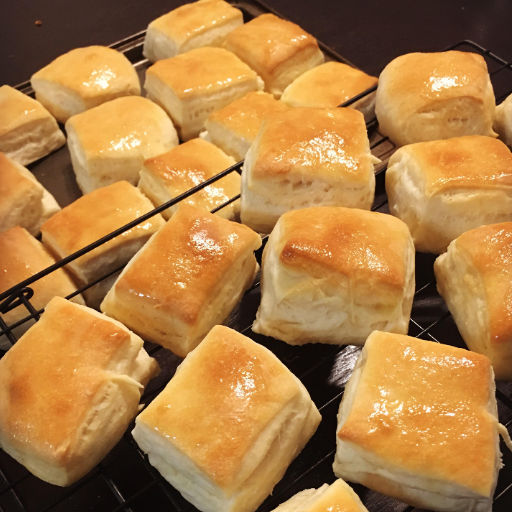
Different Flavors and Add-Ins
I think boosting the flavor of Texas Roadhouse rolls is fun and entirely open-ended. One of my favorite ideas is to go savory, with minced garlic and fresh herbs such as rosemary or thyme worked into the dough. Such touches make the roll an aromatic treat that pairs well with hearty meals, such as soups, stews, or roasted meats. Other baking projects I have tried are sprinkling shredded cheese, such as cheddar or Parmesan, inside the dough or as a topping; it brings out irresistible layers of flavor.
From the sweeter variety, I have enjoyed adding some cinnamon and brown sugar to the dough, which creates a dessert-like roll. A simple glaze of powdered sugar and milk is added on top, transforming these into something akin to cinnamon rolls. Or, in some variations, dried fruits like raisins or cranberries are folded inside to balance out that natural sweetness, which pairs well with breakfast or brunch. These simple changes completely redefine the regular rolls into their unique creations, while retaining the soft and fluffy texture that makes them so dearly loved.
For those who enjoy any little bit of kitchen experimentation, the most remarkable thing about Texas Roadhouse rolls is that you really can do anything. Whenever and wherever I have felt like making these rolls just right for a particular recipe or occasion, I have indulged in possibilities of adding spicy flavors, adding sweet flavors, or just swapping out white flour for mixtures of whole wheat or some other grains for a nuttier taste.
Gluten-Free and Health-Conscious Alternatives
Concerning gluten-free and health-conscious alternatives, I have found it satisfying and doable to customize a Texas Roadhouse rolls recipe to cater to different dietary needs. For my gluten-free alternative, I usually substitute the usual all-purpose flour with a high-quality gluten-free flour blend. One wants to ensure the blend contains xanthan gum, as it will need to be added separately; this helps give the dough its usual elasticity. I adjust the liquid content a bit, too, since gluten-free flours typically absorb more moisture. And the result is fluffy, golden rolls that feel indulgent without compromising on texture or flavor.
To create a healthier version, I have tried substituting part of the white flour with whole wheat, spelt, or even almond flour, which increases the nutritional value while adding a slightly richer taste. Honey or maple syrup make excellent natural sweeteners compared to refined sugar, offering just a hint of sweetness that complements all the salty flavors so well. Additionally, incorporating ingredients like flax or chia seeds enhances the rolls’ fiber and omega-3 content, making them both delicious and nutritious.
These modifications open the way to cater to different dietary requirements without compromising on the tempting softness that keeps one wanting more rolls. The process takes a bit of trial and error; nevertheless, it is worth it when a batch goes out that every single one can enjoy, regardless of dietary restrictions.
Using a Bread Machine for Convenience
Making these soft and flavorful rolls at home using a bread machine has completely changed the scenery. It makes baking rolls an easy affair and eliminates all the guesswork in mixing and kneading, allowing me to concentrate on the recipe. I start by rigorously weighing all the ingredients and adding them exactly as my bread machine’s manual advises. This ensures the craft turns out the same way every time. The machine handles mixing, kneading, and even the initial rising of the dough, saving me a significant amount of time and effort.
I particularly appreciate the bread machine because it ensures the rolls maintain their fluffy texture and balanced flavor. I usually use different blends of flour or add an ingredient here or there (for instance, herbs or seeds) according to taste, and the bread machine gives me no compromise from its perfection. The consistency with which the dough is mixed ensures that everything is blended evenly and done perfectly —something one can rarely achieve with human hands.
When the dough cycle is complete, I remove the dough from the machine and proceed to shape it, then let it rise before baking in a conventional oven. This hybrid method suits me perfectly because, while I combine convenience with the bread machine, I prefer to add that personal touch in the final stages. It works well when I am short on time and yet want the creative freedom to make every batch feel like homemade and a reflection of my family’s tastes.
Reference Sources
-
Texas Roadhouse Rolls – The Cozy Cook
Offers a detailed guide on forming, freezing, and baking the dough for perfect rolls. -
Texas Roadhouse Rolls – Julie’s Eats and Treats
Provides step-by-step instructions, including tips for activating yeast and achieving fluffy rolls. -
Copycat Texas Roadhouse Rolls – Mel’s Kitchen Cafe
Shares a recipe for buttery soft rolls and tips for serving with cinnamon butter. -
Texas Roadhouse Rolls Recipe – Reddit Baking Community
Features user-shared recipes and pointers for making authentic Texas Roadhouse rolls. -
Texas Roadhouse Rolls (Copycat Recipe) – Stephie Cooks
Includes a recipe for fluffy rolls and tips for pairing with cinnamon honey butter.
Frequently Asked Questions (FAQs)
How are Texas Roadhouse Rolls made at home?
It’s a simple process: prepare the essential ingredients—yeast, flour, and melted butter — before proceeding with the dough. To activate the yeast, mix warm water with the yeast and a small amount of sugar. Since the yeast is ready when bubbles are formed, place it in a large bowl or a stand mixer with flour, softened butter, and a pinch of salt. Knead it until smooth and place it in a warm, cozy spot to rise until doubled in size. After shaping into rolls, let them rise again, and then place them on a greased baking sheet to bake until they achieve their perfect golden finish.
What is the recipe for a copycat Texas Roadhouse Rolls?
The copycat Texas Roadhouse Rolls recipe evokes warm memories with its light, fluffy texture, reminiscent of those typically found on the restaurant’s menu. It usually contains bread flour, active dry yeast, and a generous amount of melted butter to achieve a buttery, cake-like taste. You will make these rolls much like the restaurant does: mixing, kneading, and willing the dough to rise. Then, later comes the icing: warm, homemade cinnamon butter, just like at the restaurant! You would love it, given how easy it is to prepare and the great taste it provides.
Can I use instant yeast for my Texas Roadhouse Rolls?
In any case, it is perfectly fine to use instant yeast for Texas Roadhouse Rolls. Instant yeast rises faster than typical active dry yeast, which saves time in dough preparation. The instant yeast is added directly to your flour and other dry ingredients when using it, followed by the addition of the remaining wet ingredients. This will work wonderfully, yielding rolls that rise well and have a light, fluffy texture. Remember to knead the dough thoroughly before letting it rise for optimal results.
How does one let the dough rise for Texas Roadhouse Rolls?
To raise the dough for Texas Roadhouse Rolls, place it in a slightly greased bowl and cover with plastic wrap or a clean kitchen towel. The dough prefers a warm place, as that will aid yeast activity. Ideally, place the dough in an area where it won’t be disturbed, such as inside an oven with the light on or on a warm kitchen counter. It must rise until it doubles in size, which typically takes one hour. This step is crucial for achieving soft and fluffy rolls.
How can I store Texas Roadhouse Rolls?
The best way to store Texas Roadhouse Rolls is to keep them in an airtight container at room temperature for short-term storage. Storing them for an extended period entails placing them inside a freezer bag and then storing it in the freezer. For reheating, simply remove them, warm them in the oven, and let them warm up and soften. Properly tucked-away homemade rolls will retain their texture and buttery taste, making them worth all the effort.
Can I make Texas Roadhouse Rolls in a bread machine?
Sure, you can make Texas Roadhouse Rolls in a bread machine! Place your ingredients into the bread machine in the order recommended by the manufacturer. Set the machine to the dough cycle so it can knead the dough and perform the first rising on its own. After that, shape the dough into rolls, let them rise again, and then proceed to bake them. This technique enables you to prepare irresistible, homemade rolls with minimal effort.
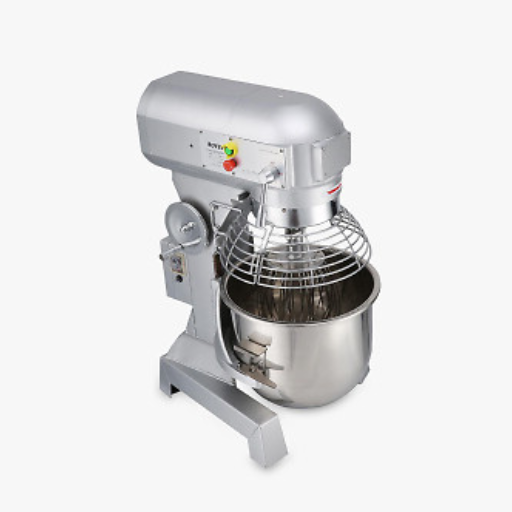
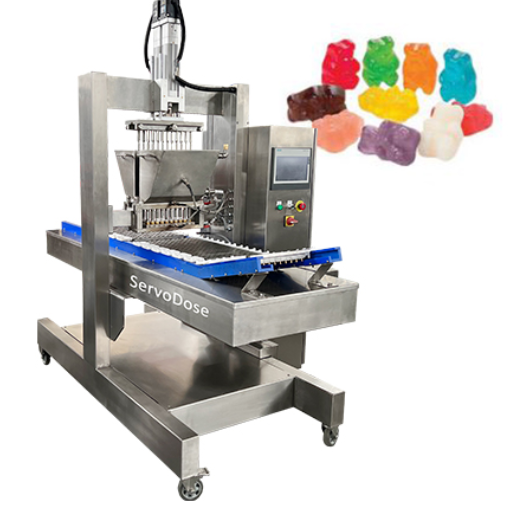

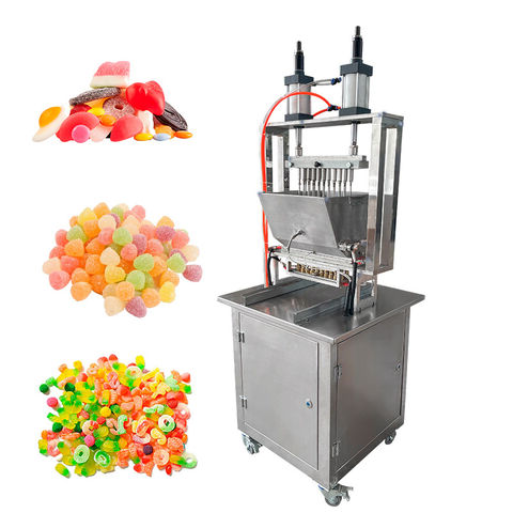

Blog Categories
Popular Blog Tags

Shanghai Fude Machinery Manufacturing Co., Ltd is a leading manufacturer of top-notch gummy and cookie making machines with more than 15 years’ experience in the industry. We provide creative equipment that ensures accuracy and speed while sharing intelligence with food producers. Shanghai Fude remains to be one of the most reliable companies for food machinery because of its dedication to perfection.



